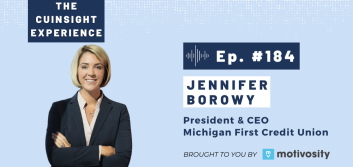Promoting financial inclusion in your credit union’s community

As member-owned-and-operated organizations, there’s no question that credit unions put community at the heart of everything they do. But not all members of American communities have equal access to financial services and education. Historically, members of underrepresented communities have been held back from financial wellness by not having access to financial services, tools, and information.
What is financial inclusion?
Financial inclusion is defined as “when everyone can access financial services that can help them build wealth, including savings, credit, loans, equity, and insurance.” It’s easy to assume that lack of access to financial services is a thing of the past, but according to a recent study, “while the wealth gap has narrowed globally, inequality within advanced economies has increased since the 1980s.”
The groups most impacted by this type of inequity are most frequently people of color — black communities in particular have been subjected to exclusionary banking practices throughout American history. But other groups are frequently subjected to financial exclusion as well — among those underbanked demographics are “rural, immigrant, LGBTQ+ and less-educated communities.”
Credit unions are uniquely positioned to be champions of financial inclusion. Being member-first, by definition, means that credit unions are more in touch with their communities than other financial institutions. There is a symbiotic relationship between credit unions and their members —helping members to improve their financial wellness in turn strengthens your credit union. It is truly beneficial to everyone involved when credit unions spread the message about the importance of financial inclusion. More importantly, your credit union can “walk the talk” and make a real difference in the lives of underrepresented populations through tailored financial services, strategic community partnerships, and financial literacy programs.
Tailor products and services towards underserved populations
Just as in classrooms, a one-size-fits-all approach to financial products and services marginalizes underserved populations. Each community is different, and therefore each credit union may need different products and services. Conducting market research on the demographics in your communities can give your credit union a place to start learning about the preferences and challenges in their respective regions. Including simplified, culturally inclusive information and services is a great way to reach a more diverse community audience.
Form strategic community partnerships
It is not always easy for credit unions to know where to begin or where to focus when striving to prioritize financial inclusion. Fortunately, there are many organizations that specialize in financial inclusion at large, or even focus more specifically on improving the lives of specific demographics and population groups. Some worthy considerations for partnership organizations might include financial education and financial literacy organizations, health and wellness nonprofits, social services and humanitarian organizations, cultural and heritage organizations, civic and advocacy groups, and community development organizations. Collaborating with community organizations gives credit unions access to their subject matter expertise and equips them with vetted assets and resources, ultimately helping credit unions better support their members and the larger community belonging to underserved populations.
Offer financial education programs
The most direct way for credit unions to promote inclusive financial literacy within their communities is by offering access to financial literacy education tools. Financial education can take many forms, such as classes, literature, or 1-1 financial counseling. But the lowest barrier to entry into the financial literacy education space, both for community members and credit unions, is via vetted third-party education tools. Incorporating third-party technology tools, in particular, is a great way to connect with underserved populations. It provides levels of accessibility and engagement beyond traditional education methods, and has the potential to help credit unions stand out from competitors via commitment to technologically and innovation. When selecting a tool, it is important to make sure that it is both compliant with national financial education standards, and actually proven to be effective with target user demographics, as demonstrated through access to tangible metrics.
What’s next?
Interested in starting the process of “walking the talk” of financial inclusion within your credit union community? Zogo’s education platform is mobile-first, gamified, and accessible, making it more inclusive to underserved populations. Its curriculum is written and vetted by experts and the platform offers turnkey tools that track impact and usage statistics. Contact the team through the form below or request a demo to learn how our education tools can work for you.





